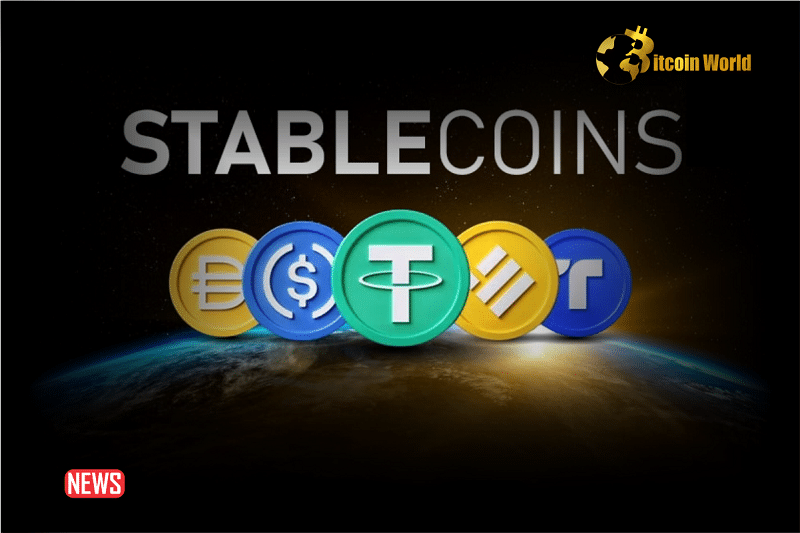Are stablecoins truly stable? The Bank for International Settlements (BIS), a global body of central banks, has dropped a new report that throws some serious shade on these much-hyped cryptocurrencies. Known for its cautious stance on the crypto world, the BIS’s latest study suggests stablecoins might not live up to their name, questioning their reliability as both a store of value and a trustworthy payment method. Let’s dive into what the BIS is saying and what it means for the future of stablecoins.
Do Stablecoins Really Live Up to the ‘Stable’ Hype? BIS Says No.
In a nutshell, the BIS isn’t convinced. After scrutinizing 68 different stablecoins, their report, published on November 8th, comes to a pretty blunt conclusion: none of them have consistently maintained their peg to fiat currencies. According to the study, this lack of consistent stability is a fundamental flaw, regardless of the stablecoin’s size or the assets backing it.
Here’s the core takeaway from the BIS report:
“For these reasons, we conclude that the stablecoins in circulation today do not meet the key criteria for being a safe store of value and a trustworthy means of payment in the real economy.”
Breaking Down BIS’s Anti-Stablecoin Arguments
So, what exactly are the BIS’s concerns? They boil down to a few key points:
- Redemption Risks: The BIS analysts question whether stablecoin issuers can always redeem users’ stablecoins for fiat currency in full and on demand. This is a critical point because the promise of a stablecoin is its 1:1 peg to a fiat currency, implying easy convertibility.
- Data Transparency Gaps: The report highlights a lack of clear data surrounding stablecoins. These “significant data gaps” make it difficult to properly assess the risks stablecoins pose to the broader financial system and payment infrastructures. Without transparency, it’s hard to gauge the true stability and resilience of these digital assets.
Read Also: Stablecoins Present Innovative Opportunities But Also Pose A Threat
The SVB Collapse: A Real-World Example of Stablecoin Vulnerability
To illustrate their point about stablecoin instability in the face of market pressures, the BIS report points to the collapse of Silicon Valley Bank (SVB) in March 2023. This event triggered a significant outflow from USD Coin (USDC), a major stablecoin. Why? Because Circle, USDC’s issuer, held a portion of its US dollar reserves at SVB. When SVB faltered, it sparked concerns about USDC’s backing, leading to a massive $5.8 billion outflow in just one week.
This example underscores a crucial vulnerability: even stablecoins pegged to seemingly safe assets like the US dollar can be affected by traditional financial system shocks. It highlights the interconnectedness and potential contagion risks that the BIS is concerned about.
Why Does BIS Doubt Stablecoin Stability?
The BIS report concludes that stablecoins, across different types and backing mechanisms, struggle to maintain a consistent peg. Intraday and even daily price fluctuations, along with deviations from the intended peg, make them unreliable for safe value storage and everyday payments, according to the BIS.
Essentially, the BIS argues that the inherent volatility and operational risks within the stablecoin ecosystem undermine their core promise of stability. They are questioning whether the current stablecoin models can truly deliver the stability needed for widespread adoption in the real economy.
BIS vs. Crypto: A Consistent Skeptical Stance
This critical view of stablecoins isn’t exactly surprising given the BIS’s broader perspective on cryptocurrencies. The institution has consistently voiced skepticism about the entire crypto space, viewing it as a “flawed system” with a weak link to the real world. In their view, traditional central bank money provides a much more solid and dependable foundation for the financial system.
The BIS emphasizes the importance of central bank digital currencies (CBDCs) as a potentially more stable and regulated alternative to private cryptocurrencies and stablecoins. They see CBDCs as leveraging the benefits of digital innovation while maintaining the trust and stability associated with central bank-backed currencies.
A Glimmer of Pragmatism? BIS Allows Banks to Hold Some Crypto
Despite their overall skepticism, there’s a hint of pragmatism in the BIS’s approach. The Basel Committee on Banking Supervision (BCBS), part of the BIS, has allowed banks to hold up to 1% of their reserves in crypto assets like Bitcoin (BTC). This move, aligned with the Basel Framework, acknowledges the growing relevance of crypto assets, albeit with strict limitations and risk management considerations, as Finbold reported on June 30th.
This allowance suggests that while the BIS remains cautious about the systemic risks of cryptocurrencies and stablecoins, they are also recognizing the need for regulated financial institutions to engage with this evolving asset class in a controlled manner.
The Bottom Line: BIS Challenges Stablecoin Narrative
The BIS report delivers a significant challenge to the narrative surrounding stablecoins. It questions their fundamental stability, highlights operational and transparency risks, and reinforces the BIS’s broader skepticism towards the crypto ecosystem. While the crypto industry champions stablecoins as a bridge to traditional finance and a tool for wider adoption, the BIS’s perspective serves as a crucial reminder of the regulatory and stability hurdles that still need to be overcome.
As the debate around digital currencies intensifies, the BIS’s voice carries considerable weight. This report will likely fuel further discussions and scrutiny of stablecoins from regulators and policymakers worldwide. Whether stablecoins can evolve to address these concerns and truly live up to their name remains to be seen, but the BIS report certainly sets a high bar for them to clear.
Disclaimer: The information provided is not trading advice. Bitcoinworld.co.in holds no liability for any investments made based on the information provided on this page. We strongly recommend independent research and/or consultation with a qualified professional before making any investment decisions.
Disclaimer: The information provided is not trading advice, Bitcoinworld.co.in holds no liability for any investments made based on the information provided on this page. We strongly recommend independent research and/or consultation with a qualified professional before making any investment decisions.


